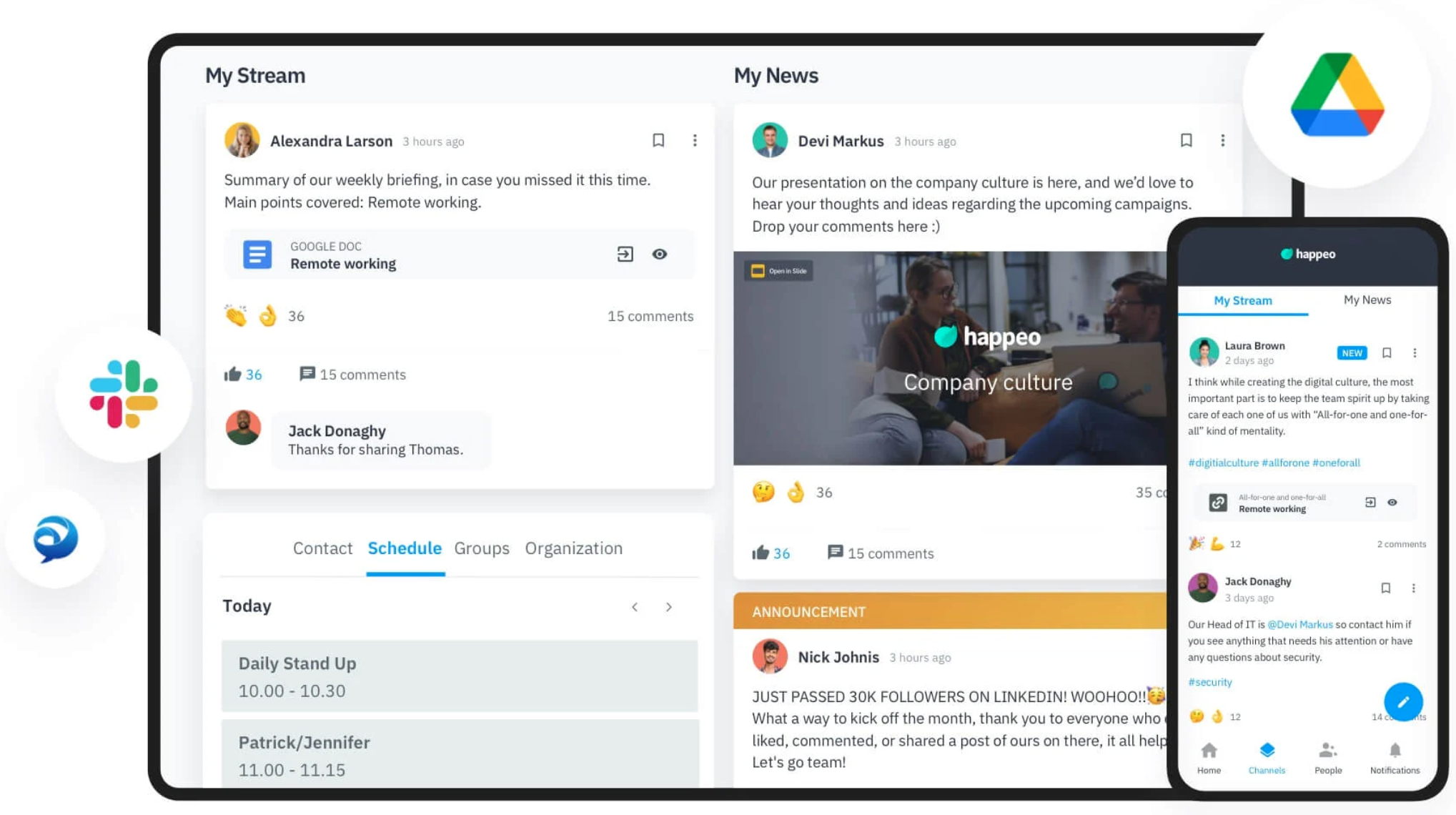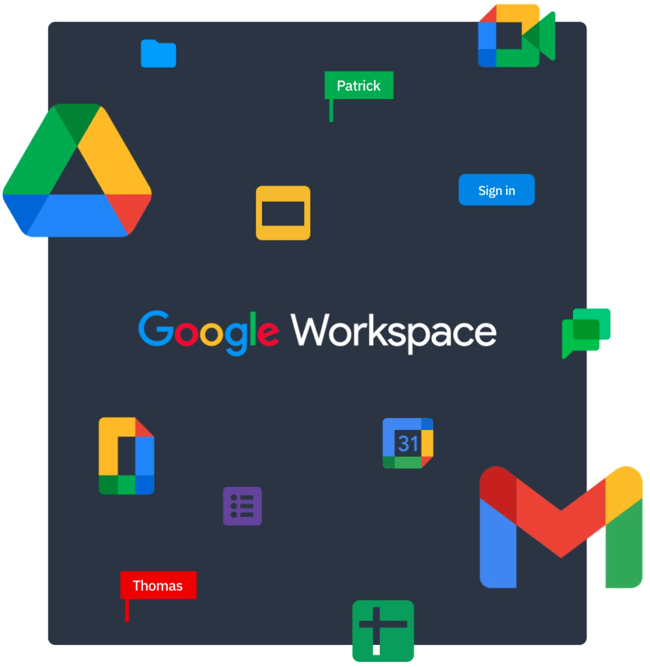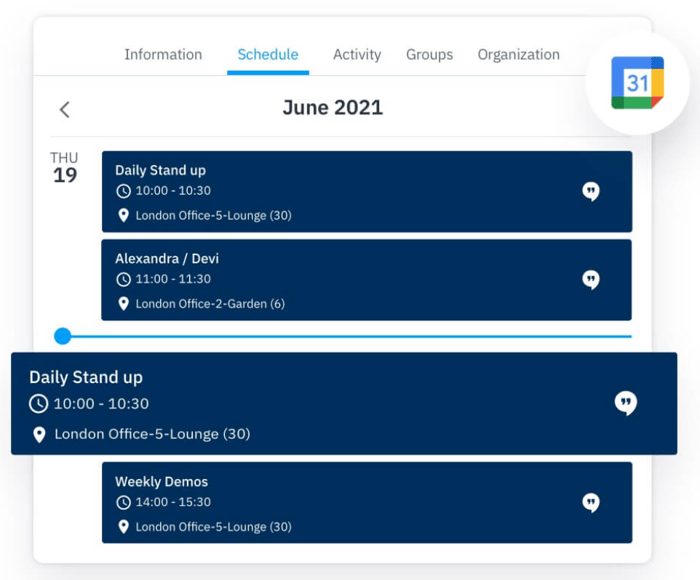

Jonathan Davies
13 mins read
Start building your digital home with Happeo
Request a demoRemote collaboration takes place when a group of people works together from a distance to achieve a common goal.
One of the biggest factors for a successful workplace is whether or not employees can perform well as a team. Remote collaboration tools and applications, screen sharing platforms, instant messaging, and document collaboration software make it possible for people to engage in real-time from anywhere in the world.
What are collaboration tools?
Collaboration tools help teams to work together from anywhere in the world and to reach a common goal. Collaboration tools are the driving force behind a team’s productivity and efficiency. They enable Internal Communication, improve knowledge management and reduce bottlenecks in feedback processes.
With the shift to remote working, it is more urgent than ever for companies to adapt to collaboration tools to keep their teams on the same page at all times.
How an intranet improves the remote work experience
Watch video
As remote work is unavoidable, employees rely on digital technology to collaborate productively. Failing to provide employees with tools suitable for working remotely means that your company isn’t ready to adapt to the new normal. Needless to explain, that’s a future threat to your business. Here’s a reality check:
- 90% of employees find digital tools extremely useful for remote team collaboration
- The usage of remote-collaboration tools increases employee productivity up to 30%
- 57% of organizations have increased their remote-collaboration software spendings
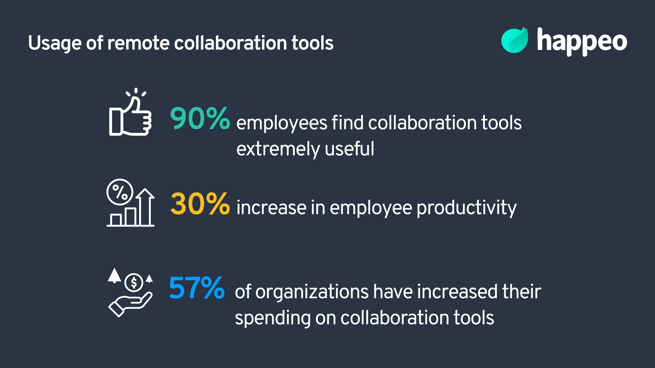
Luckily, remote collaboration has become easier than ever. Read on to find out which remote working tools will serve best your teams in 2024.
Intranet
Intranets drive employee engagement and productivity by being a hub for collaboration, information exchange, and communication.
Tool 1: Happeo
Happeo is a social intranet and remote work tool that combines collaboration, social networking, and communication in an all-in-one tool. It integrates seamlessly with Google Workspace and all the apps that your organization already uses. By combining your existing apps with your core Google collaboration tools, Happeo improves employee experience while stimulating productivity. Documents stored on Google Drive can be easily attached to channel posts, which can be shared directly in Slack for everyone to be notified. Working remotely comes with enough challenges of its own, you don’t need your intranet to be another one.
Online project collaboration tools
Tool 2: Proofhub.com

Image source: ProofHub
ProofHub is a project management and team collaboration software that combines a variety of work management features into one convenient package. It focuses on critical aspects of workplace communication: teamwork, project planning, and stakeholder participation that help remote teams work together efficiently. ProofHub manages most project activities in one spot, whether it's organizing projects according to scheduled events and deadlines, or debating essential ideas with your team.
ProofHub replaces a number of work apps, including Team Calendar, Team Chat, Task Management, File Storage, and so on. It can be accessed from anywhere, making it ideal for remote teams. ProofHub's strong reporting features streamline project performance tracking for managers. It's a great tool for collaborative remote teams searching for a one-stop shop for their project or task management needs.
Tool 3: Trello
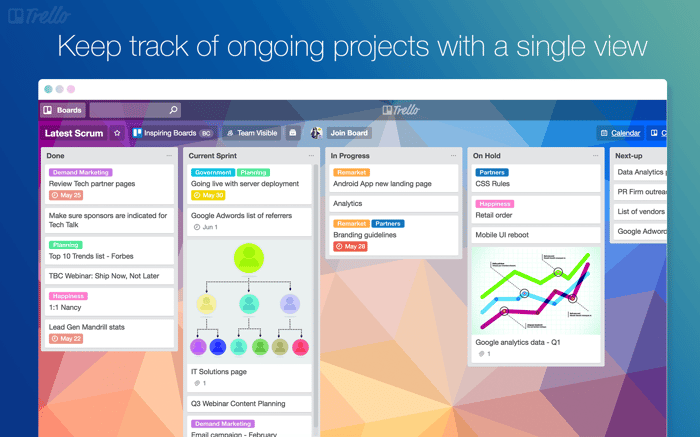
Image source: G2
Trello is a list-making application that provides a good overview of who’s doing what, how far they are with their tasks, and what still needs to be done. Add a task and if needed, break it down into subtasks – the smaller steps you need to complete before considering your assignment done. Let other remote colleagues know how you’re progressing by putting a label to indicate whether your project is in the making, waiting for approval, or done.
When working remotely, one of the most crucial factors to success is keeping on track with the working progress, and using Trello is a handy way to do it.
Tool 4: Asana
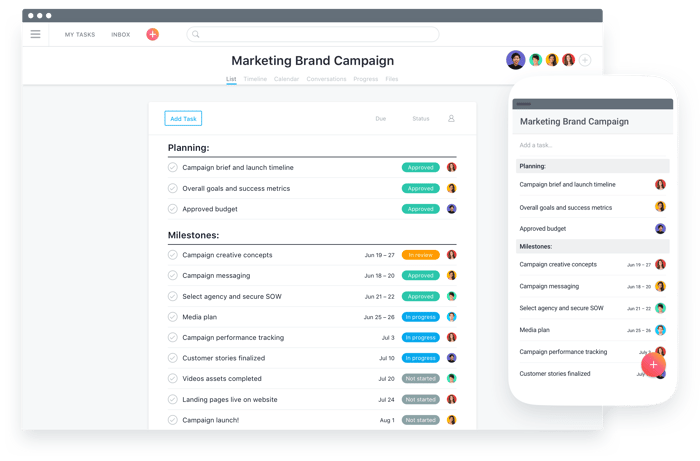
Image source: G2
Asana is the detailed, mature version of online project management tools. Just like Trello, Asana has individual and project boards, and an option to create subtasks, but it doesn’t stop here.
This remote-collaboration tool allows team members to be descriptive about what needs to be done. They can set deadlines, task priorities, and dependencies on other tasks. It notifies you when you get assigned to a task or when the one you assigned gets completed. Speaking of tasks, Asana keeps task lists neat and sleek, minimizing all chaos associated with switching to remote working. Don’t worry about missing a deadline: Asana sends daily and weekly reminders.
Tool 5: Monday.com
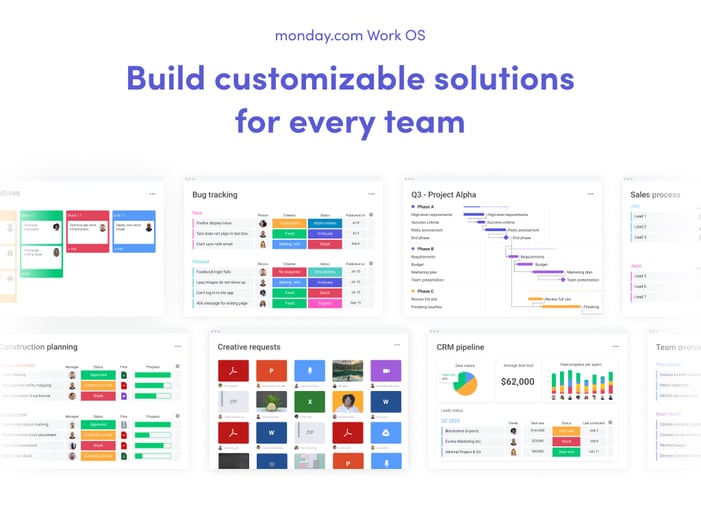
Image source: G2
With more than 100,000 teams around the globe, monday.com is another one of our favorite remote collaboration tools. Monday.com is a project management tool that helps organizations to manage projects and tasks and to coordinate workflows. It’s incredibly flexible and can be used across teams, departments, leaders, and organizations - and for all types of projects and processes. Its intuitive design helps everyone in the team to keep an overview of all projects, making it a great tool for remote workers.
Document collaboration tools
These tools are cloud-based, so no additional software purchases are required. Cloud-based tools are known for bringing quality results – 94% of organizations report better online security, 80% of them see operation improvements, and according to 63% there is a significant jump in flexibility.
Tool 6: Google Workspace
With collaboration apps like Google Documents, Sheets, or Slides, collaborators can leave comments and tag co-workers when specific feedback is required. Managers can also give different levels of access to certain employees to protect sensitive company data. The option to edit documents offline is a definitive advantage, while the intuitive design makes working with the apps easy. If you are looking to improve the remote business workflow, the starting point is Google Workspace.
With this real-time collaboration tool - or rather, set of tools - there is no need to arrange a phone call or video chat to review documents. Google Workspace is also highly integratable, so you can always extend it with recommended applications via API connections. When it comes to storage, files can be uploaded directly to Google Drive, and individuals can be automatically notified via email for any updates in the document.
Tool 7: Office 365
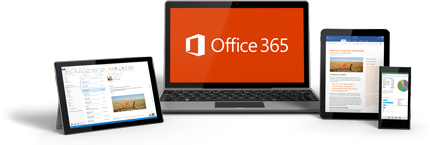
Image source: G2
Office 365 Microsoft’s remote collaboration suite that makes their well-known Word, Excel, and Powerpoint available online. If you’re looking for a collaboration tool for remote teams that work with spreadsheets and need a wide range of functionalities, then Office 365 is the place. Full-time or part-time remote employees can create, share, and edit documents together at the same time, all from one location online.
Time management tools
Tool 8: Google Calendar
Google Calendar makes scheduling meetings quick and easy. Even though meetings are not always the most productive part of your day, they are essential to collaboration, especially when working remotely.
It allows people to jump into video meetings from anywhere in the world. Calendars can be accessed and shared by whoever has permission, making it easier to schedule group conferences without double booking by accident.
When an event is shared through Google Calendar, teams can attach any relevant documents or information that needs to be reviewed during the meeting. Remote workers can also set custom notifications before each event both with the mobile app and the desktop version. If employees frequently schedule meetings with clients, Google Calendar is a great way to track these appointments and provide excellent customer support. The long term success of a remote team depends on choosing the right organizational tools, and those are the ones that remove time and place as obstacles.
Tool 9: Microsoft Outlook Calendar
Outlook’s Calendar is a great time management tool for Microsoft-based remote teams. Microsoft Outlook Calendar enables users to appoint meetings and events, check group schedules, and set different viewing modes. With Outlook Calendar, collaborators can send their calendar via email or link it to Sharepoint and have an overview of the events from there in their schedule. The tool allows users to have assignees schedule, move or cancel meetings on their behalf. Remote work is all about flexibility, and that is exactly what Outlook Calendar offers.
Discover all the features of a remote work software
Download list
Video conferencing
One of the disadvantages of remote work from home jobs is that people miss out on daily interactions in the office. This often results in feelings of isolation or loneliness. Companies can help workers feel more empowered through remote collaboration tools like video conferencing. This type of collaboration software allows individuals to communicate and interact, even though they are not physically present.
Tool 10: HubSpot Meetings
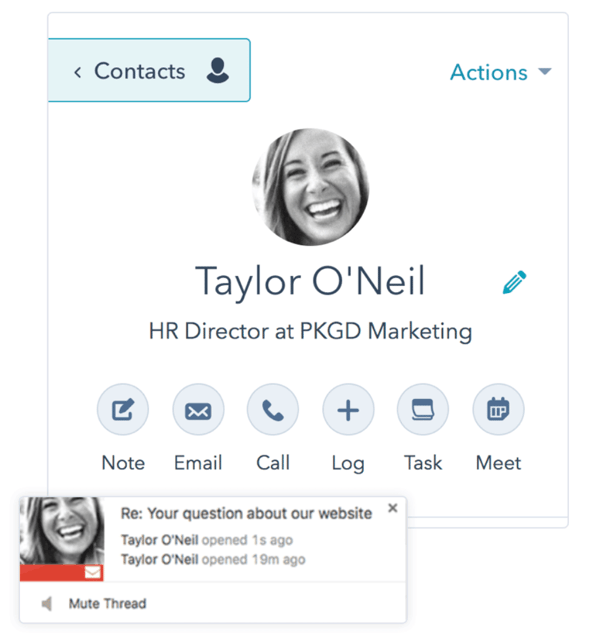
Image source: Hubspot
HubSpot's meeting scheduling tool provides you with a personalized booking link you can use to invite people to view your availability and book meetings with you. This saves the time that you would normally spend emailing your contacts, back and forth, to find a time and day that’s suitable for anyone.
HubSpot Meetings solves this issue, plus you can also create group meetings link to allow contacts to schedule time with more than one person in your organization.
When someone schedules a meeting, their contact details will automatically be added to your calendar and pushed to the HubSpot CRM database (the CRM is free-forever, for unlimited users).
Tool 11: Google Meet
Google Meet makes collaborative working even easier for remote team members who live in different time zones. It offers the ability to record the video meeting, so those who can’t join can quickly catch up later. You can present your screen, raise your hand, add up to 100 participants to the call or drop a question in the built-in chat if you don’t feel like interrupting the conversation. Remote working HR teams can also use Meet to improve their online training and communicate with job seekers online.
Tool 12: Microsoft Team's video conferencing
Teams is another remote collaboration tool developed by Microsoft. It is suitable for video conferencing as well as for direct messaging. Teams allows for screen-sharing and offers the option to raise a hand when you want to speak up, while notes can be taken with OneNote. Some Microsoft packages include Skype for Business, so that can be a plus if that’s a tool your team prefers using.
Teams can host virtual rooms for groups that need to work remotely, providing them with a place that brings communication and collaboration together.
Tool 13: Zoom
Zoom is a proven video call platform with a built-in chat to support the discussion. It’s used by 36% of workers in 2020, which makes it the most used remote collaboration tool over the past year. Similar to Google Meet and Teams, Zoom conferences can host up to 100 participants and have a raise-a-hand feature, and integrates with any camera for Zoom meetings. Zoom Rooms for Touch is the extension that takes remote collaboration a step further: it offers a whiteboard feature that allows collaborators to draw on the shared screen, make corrections, circle or underline in real-time, while everyone is watching.
Team chat apps
Whether working from home or in a co-working space, employees need to connect in real-time. This is where instant messaging comes in. The advantage of sending messages through a chat window is that it is just as instantaneous as phone or video calls, but does not interrupt your workflow. Instant messaging provides a collaborative space where people can ask questions, offer feedback, or troubleshoot issues to resolve problems quickly. Companies can also have dedicated informal chats where people can share success stories or come up with new and creative ideas. Team chat apps provide a way for remote workers to stay in-touch, be it on fun topics or to quickly resolve issues.
Tool 14: Slack
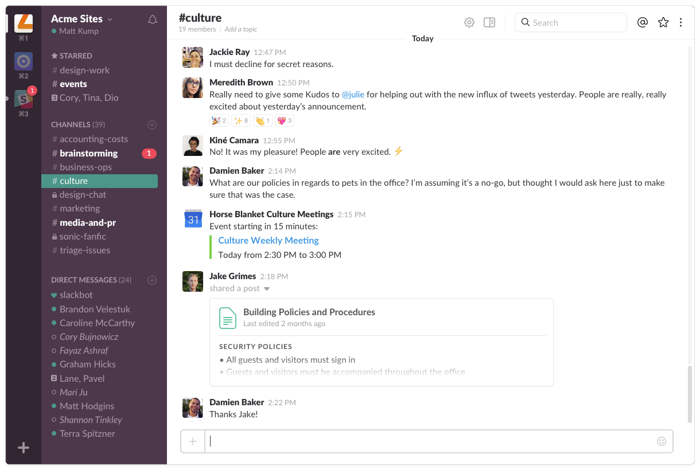
Image source: G2
Slack is a platform for instant business communication that companies use for chat between employees. They can send one-on-one messages, create groups with more people or set up channels dedicated to different topics. Slack isn’t where remote collaboration takes place, but it’s where remote team members can communicate. Working on projects is a dynamic process and often requires quick changes. Slack makes it possible to send a quick text instead of writing up a whole email and slowing down the working pace while waiting for a response.
Tool 15: Google Chat
Chat is Google Workspace’s tool for direct messaging that’s often used as an alternative to Slack or Teams’ chat functionality. It can’t sustain collaboration on its own either, but it provides chat rooms where teammates can discuss the working process and share content from Drive. Remote employees can use it autonomously or in Gmail. In any case, it’s a way to have all messages in one place.
Microsoft Teams (again)
Other video conferencing, Microsoft Teams is also excellent for instant messaging. You can message both groups and individuals or mention someone to draw their attention and get a quicker response. Plus, Teams is a great way to reduce emails.
Want to see how Happeo helps your business?
Book a demo
Wrap up
When fully remote, teams need to have a seamless and organized collaboration flow to remain productive and keep up the teamwork. Today, employees work in many different environments, and managers need to make sure that all of them have a digital replacement. One final piece of advice: focus your time and resources on collaboration tools for remote workers – your company deserves to have a connected and collaborative team.



